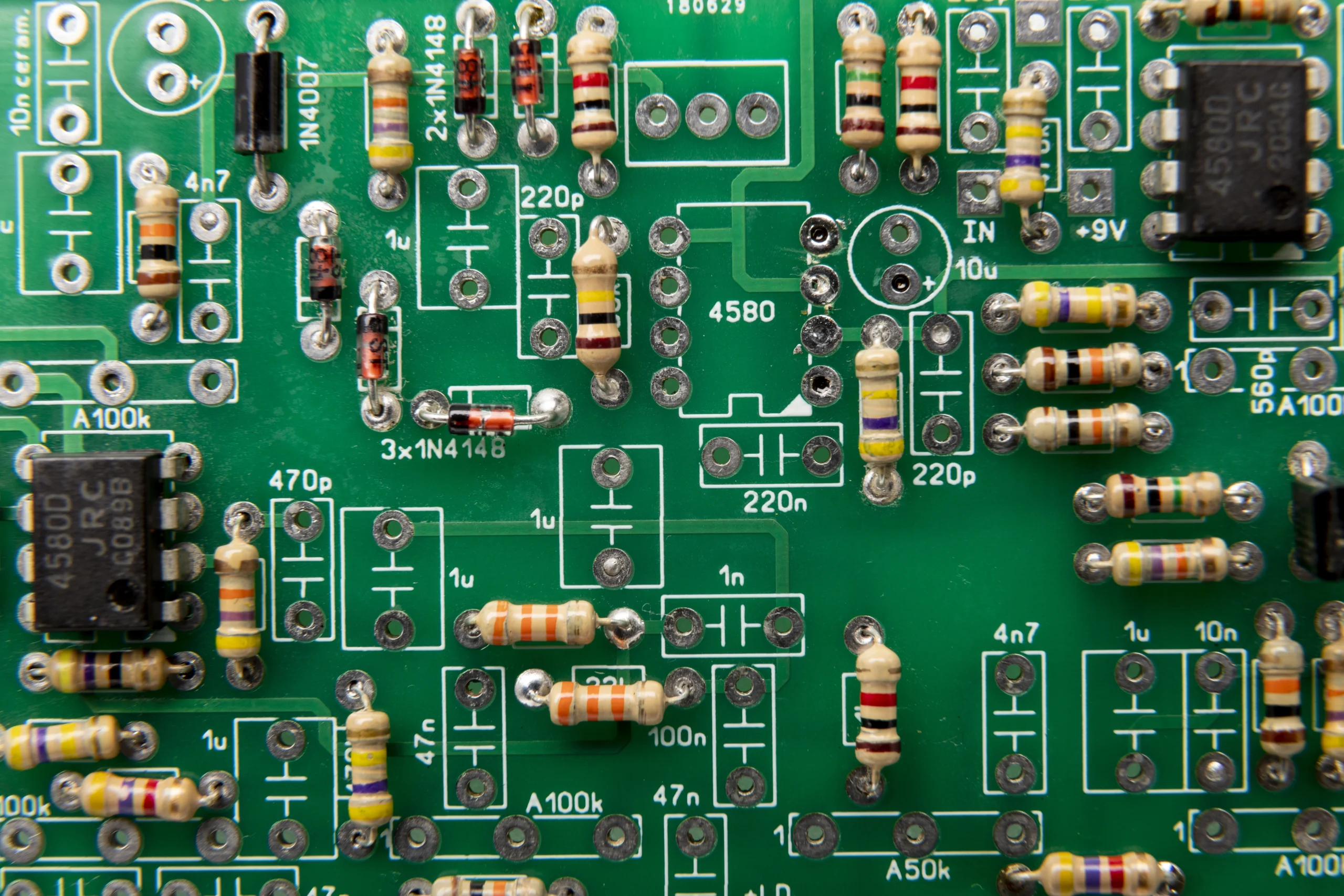Resistor Color Codes Explained: How to Read Them (With Chart & Examples)
Have you ever found yourself staring at a tiny resistor, puzzled by the colored stripes painted across its body? You’re not alone. Whether you’re just getting into electronics or working on a DIY project, understanding resistor color codes can feel like trying to read a secret code—because, well, it is.
But here’s the good news: once you learn how to decode these stripes, you’ll feel more confident identifying resistor values, troubleshooting circuits, and assembling projects without relying on guesswork or constant multimeter use. In this guide, you’ll master resistor color codes step-by-step—with examples, charts, and tips designed for real-world use.
Table of Contents
What Are Resistor Color Codes and Why Do They Matter?
You’ve probably seen resistors countless times—on circuit boards, inside electronics, or in Arduino kits. Each resistor is marked with a specific combination of colored bands, and each color has a numeric meaning. This system allows you to determine a resistor’s value (in ohms) without needing to test it.
These codes were created by the Electronic Industries Alliance (EIA) and are now standardized under IEC 60062. They’re essential because resistors don’t usually have room for printed numbers like other components. Without these color bands, identifying resistance values quickly would be almost impossible—especially in the field.
Understanding the Resistor Color Code Chart
So, how do you decode these colors into actual numbers? It starts with understanding the resistor color code chart.

Standard 4-Band Resistor Color Code Chart
Most general-purpose resistors you’ll encounter have four bands:
| Color | Digit | Multiplier | Tolerance |
|---|---|---|---|
| Black | 0 | ×1 | — |
| Brown | 1 | ×10 | ±1% |
| Red | 2 | ×100 | ±2% |
| Orange | 3 | ×1,000 | — |
| Yellow | 4 | ×10,000 | — |
| Green | 5 | ×100,000 | ±0.5% |
| Blue | 6 | ×1M | ±0.25% |
| Violet | 7 | ×10M | ±0.1% |
| Gray | 8 | ×100M | ±0.05% |
| White | 9 | ×1G | — |
| Gold | — | ×0.1 | ±5% |
| Silver | — | ×0.01 | ±10% |
| None | — | — | ±20% |
Here’s how the bands are typically structured:
- 1st Band = First digit
- 2nd Band = Second digit
- 3rd Band = Multiplier
- 4th Band = Tolerance (accuracy)
How to Read a 4-Band Resistor Step-by-Step
You can decode a 4-band resistor in just a few steps. Here’s the method you’ll use every time:
Step 1: Identify the Starting Point
Most resistors display the tolerance band (gold or silver) on the far right. That helps you determine which end to start reading from—you always read left to right, starting from the opposite side of the tolerance band.
Step 2: Decode the First and Second Bands
Each of these bands represents a single digit. Use the chart above to match the colors to numbers.
Step 3: Apply the Multiplier
The third band tells you what to multiply the first two digits by. For instance, a yellow band (×10,000) will multiply your number by ten thousand.
Step 4: Determine Tolerance
Tolerance tells you how accurate the resistor’s value is. For example, ±5% means the actual resistance can be 5% higher or lower than the labeled value.
Example:
Let’s say you have a resistor with the following color bands:
Red – Violet – Yellow – Gold
Now decode it:
- Red = 2
- Violet = 7
- Yellow = ×10,000
- Gold = ±5%
Final Value: 27 × 10,000 = 270,000 ohms (270kΩ) ±5%
Pretty simple, right?
Examples of Common Resistor Color Codes in Real Projects
You’ll often come across these standard resistor values. Here are a few examples with their color codes:
| Resistance | Color Bands | Explanation |
|---|---|---|
| 220Ω | Red – Red – Brown – Gold | 22 × 10 = 220Ω ±5% |
| 1kΩ | Brown – Black – Red – Gold | 10 × 100 = 1,000Ω ±5% |
| 4.7kΩ | Yellow – Violet – Red – Gold | 47 × 100 = 4,700Ω ±5% |
| 10kΩ | Brown – Black – Orange – Gold | 10 × 1,000 = 10,000Ω ±5% |
| 100kΩ | Brown – Black – Yellow – Gold | 10 × 10,000 = 100,000Ω ±5% |
If you’re doing hobby electronics or building a simple LED circuit, you’ll find 220Ω and 10kΩ used constantly. Keep a few of these on hand, and you’re set for most basic tasks.
5-Band and 6-Band Resistors: What’s the Difference?
Once you step into more precise electronics—like audio gear, sensors, or instrumentation—you’ll find 5-band or 6-band resistors.
5-Band Resistors:
Structure:
- 1st Digit
- 2nd Digit
- 3rd Digit
- Multiplier
- Tolerance
6-Band Resistors:
Same as 5-band, but with a sixth band that indicates temperature coefficient—important for resistors used in temperature-sensitive environments.
Example (5-Band):
Brown – Green – Black – Red – Brown
= 1 5 0 × 100 = 15,000Ω (15kΩ) ±1%
When to Use 5 or 6-Band:
- Precision circuits
- Audio amplifiers
- Temperature-sensitive equipment
Tips for Identifying and Testing Resistors
Sometimes resistors aren’t brand new. They might be discolored, worn out, or installed in a way that makes reading bands difficult. Here’s how to deal with that.
Visual Clarity Tips:
- Use a magnifying glass or macro lens
- Clean dust or residue gently with isopropyl alcohol
- Adjust lighting to minimize glare
Use a Multimeter When:
- Bands are faded or unreadable
- You’re unsure about the tolerance
- You’re checking for a burnt resistor
A digital multimeter can confirm resistance value instantly and tell you if a component has drifted or failed.
Common Mistakes When Reading Resistor Codes
You’re learning something valuable—but it’s easy to misread resistor codes if you’re not careful. Avoid these common slip-ups:
Mistake #1: Reading from the Wrong Side
Gold or silver bands should go on the right side. Start from the opposite end.
Mistake #2: Confusing Similar Colors
Red vs. Brown? Violet vs. Gray? Double-check in proper lighting.
Mistake #3: Ignoring Tolerance
For circuits requiring precision (like audio or analog), tolerance matters a lot.
Mistake #4: Misidentifying Burned Resistors
A burned resistor often changes color or becomes unreadable. Always verify with a multimeter before replacing it.
FAQ – Resistor Color Codes
What do the colors on a resistor mean?
Each color represents a digit, a multiplier, or a tolerance value. Together, they help you calculate the resistor’s resistance.
How can I remember the resistor color code?
Try this mnemonic:
“BB ROY of Great Britain Very Good Wife”
- Black, Brown, Red, Orange, Yellow, Green, Blue, Violet, Gray, White
What if the resistor has no color bands?
It may be a wirewound resistor or designed for a specific purpose. Use a multimeter to verify.
Can I rely on color codes alone?
For quick checks, yes. But for critical applications, always test with a multimeter.
Conclusion: Master the Code, Master the Circuit
Now that you know how to read resistor color codes, you’ve taken a big step in mastering electronics. You no longer have to guess resistor values, misread components, or waste time testing everything with a multimeter. This skill saves time, boosts your confidence, and gives you the power to troubleshoot or build smarter.
So the next time you see a resistor with Red – Violet – Yellow – Gold, you’ll know it’s not just a decoration—it’s 270kΩ waiting to power your circuit.


